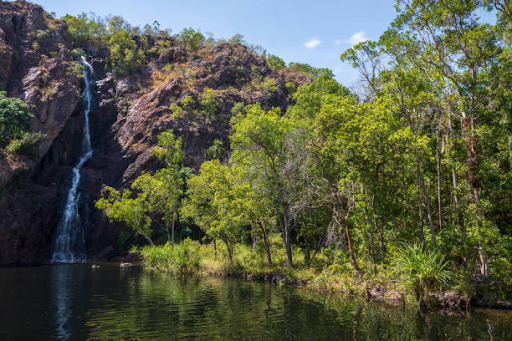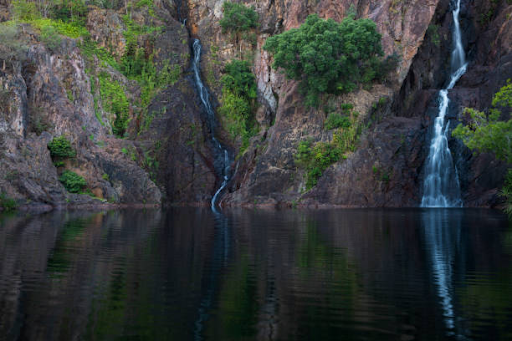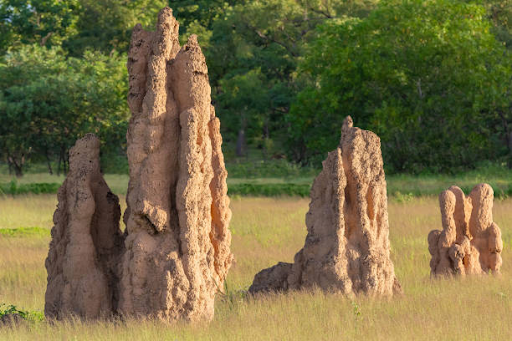Spanning a vast area of the Northern Territory, Litchfield National Park is a veritable paradise for nature lovers and adventure seekers alike. From the awe-inspiring waterfalls and intriguing termite mounds to the mysterious sandstone formations of the Lost City, it offers an endless array of activities set against the backdrop of its rich ecosystem. Whether you’re looking to embark on a refreshing litchfield day tour, hike rugged trails, or simply soak in the serenity of nature, Litchfield National Park is a treasure trove of natural grandeur waiting to be explored. This guide provides a comprehensive overview of the top attractions and things to do in the park to ensure your visit is both memorable and magical.
Planning Your Visit to Litchfield National Park
Any adventure to Litchfield National Park demands a bit of preparation. Visiting during the dry season, between May and September, allows for the best experience, as the weather is more conducive to outdoor activities and most attractions are fully accessible. Although there is no entrance fee to the park, it’s wise to invest in a detailed map and consider the cost of camping permits if you plan to stay overnight. The park is well-equipped with visitor facilities, including restrooms and picnic areas, ensuring comfort during your stay.

Getting to Litchfield National Park
Litchfield National Park is a scenic drive from Darwin, the nearest major city. Accessible by car or tour bus, visitors can embark on a litchfield day tour from the city or rent a car for more flexibility and independence. Signage along the route is clear, guiding explorers through the stunning landscapes to the park’s entrance. If you’re not planning to drive, various shuttle services offer convenient transportation from nearby locales right to the heart of the park.
Must-See Attractions in Litchfield National Park
Explore Majestic Waterfalls
Litchfield National Park’s waterfalls are some of its most breathtaking landmarks. Each offers a unique experience, from the towering twin cascades of Wangi Falls to the serene multi-level plunges of Florence Falls. At Buley Rockhole, visitors can hop from pool to pool in the cascades, enjoying the cool waters and vibrant atmosphere. Please ensure the following safety guidelines are adhered to as changing seasonal conditions can affect accessibility.
Delving into the Magnetic Termite Mounds
The park’s termite mounds are a testament to the ingenuity of nature. These natural phenomena, standing up to 2 meters high, are aligned north to south to regulate the temperature inside, a fact that continues to fascinate scientists and tourists alike. Exploring these mounds, either independently or through guided tours, one can learn about termite life and the ecosystem within the park.
The Lost City: A Geological Marvel
The Lost City, a collection of sandstone formations resembling ancient ruins, is a spectacle for the eyes. Sculpted over millions of years, these pillars and blocks take you back in time. Access to The Lost City is restricted to 4WD vehicles and can be rough; tours are recommended for those without suitable transport.
Adventure Activities for Thrill-Seekers
Hikers in Litchfield National Park are in for a treat, with trails that cater to both leisurely walkers and experienced trekkers. The Tabletop Track is a multi-day circuit that takes adventurers through diverse landscapes and past several waterfalls, offering a challenging yet rewarding experience. For something less strenuous, Walker Creek offers a delightful day hike with picturesque stopovers for swimming and picnicking.
Immersing yourself in Litchfield National Park’s pristine swimming holes is a real highlight. Before diving in, visitors must note which areas are safe for swimming, as conditions can change. Clear, cool waters entice visitors to take a refreshing dip, with designated swimming areas such as Wangi and Buley Rockhole among the popular choices.

Family Friendly Explorations
The park is an excellent destination for families, with plenty of opportunities for kids and adults to learn and play together. Educational programs by park rangers provide insights into the park’s natural and cultural significance, creating meaningful experiences for all ages. Spacious picnic areas with beautiful views offer opportune spots to share a meal and relish the tranquility of nature.
Wildlife Watching: A Biologist’s Dream
Boasting a diverse range of flora and fauna, Litchfield National Park is home to numerous species of birds, reptiles, and mammals. Visitors may spot agile wallabies, monitor lizards, and a plethora of birdlife. Dawn and dusk offer the best chances for wildlife sightings when animals are most active.
Cultural Encounters: Learning About Indigenous Heritage
The traditional custodians of Litchfield National Park have a deep spiritual connection to the land. Taking part in a cultural tour affords visitors the chance to hear Aboriginal stories, view ancient rock art, and understand the significance of the landscape through the eyes of its first inhabitants.
| Tip | Description |
|---|---|
| Stay on marked trails | Protects both visitors and the natural environment from harm. |
| Carry out all waste | Helps maintain the park’s pristine condition for future visitors. |
| Use eco-friendly products | Reduces the impact on wildlife and water quality. |
| Respect wildlife | Keep a safe distance and do not feed the animals. |
| Be fire aware | Adhere to fire regulations and guidelines at all times. |
| Learn about the area | Understanding the park’s cultural and natural heritage enhances your experience and appreciation. |
Conclusion: Why Litchfield National Park is a Must-Visit Destination
Litchfield National Park is a diverse landscape that offers something for everyone. From its renowned waterfalls and refreshing swimming holes to its rugged hiking trails and cultural insights, it encapsulates the very essence of Australia’s wild beauty. A trip here is more than just a day tour; it’s an immersive journey into a world where nature and culture intertwine. As you plan your visit, remember to approach Litchfield with a spirit of adventure and a commitment to leave no trace, ensuring this precious environment remains unspoiled for generations to come.
FAQs About Litchfield National Park
Before you pack your bags and set off for Litchfield National Park, here are some frequently asked questions to help you prepare for your journey.
- What is the best time of year to visit Litchfield National Park? The best time to visit Litchfield National Park is during the dry season from May to September when the weather is cooler and there is less humidity, which allows for pleasant hiking and exploring conditions.
- Are there any dangerous animals in Litchfield National Park I should be aware of? While the park is generally safe, it’s important to be cautious and aware of potential dangers such as crocodiles in certain waterways. Always adhere to safety signs and guidelines provided by park rangers.
- Do I need a permit to camp in Litchfield National Park? Yes, camping permits are required to camp within the park’s designated campgrounds. These permits can be obtained online or at visitor information centers before settling in at any campsite.
- Can I swim in all the waterfalls and pools in the park? Not all waterfalls and pools are safe for swimming due to seasonal variations, cultural significance, or the potential presence of crocodiles. It’s mandatory to observe all signage and follow the instructions of park staff regarding where it is safe to swim.
- Are there guided tours available in Litchfield National Park? Yes, various guided tours cater to different interests, from wildlife observation to cultural heritage explorations. These can be booked with tour operators or at the visitor centers located within the park.
